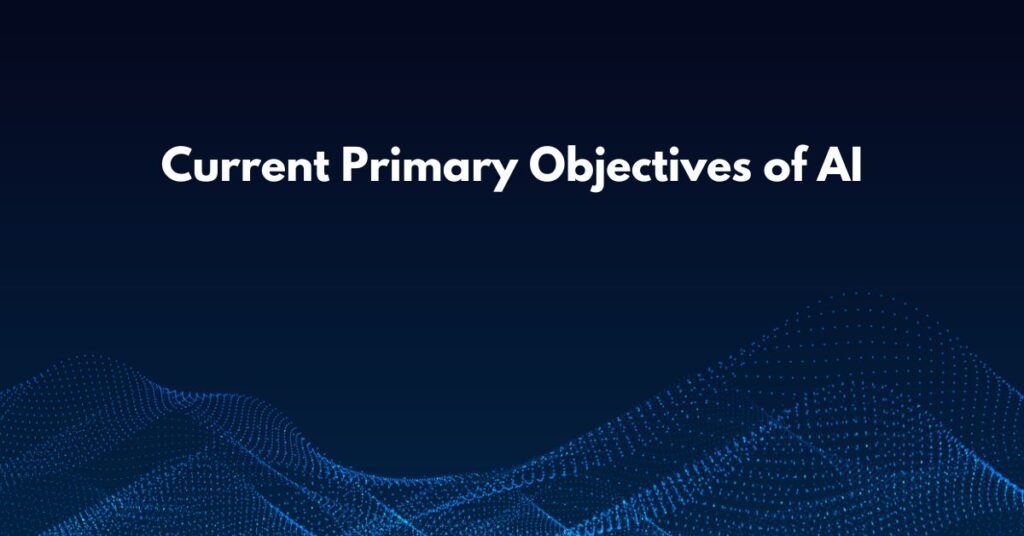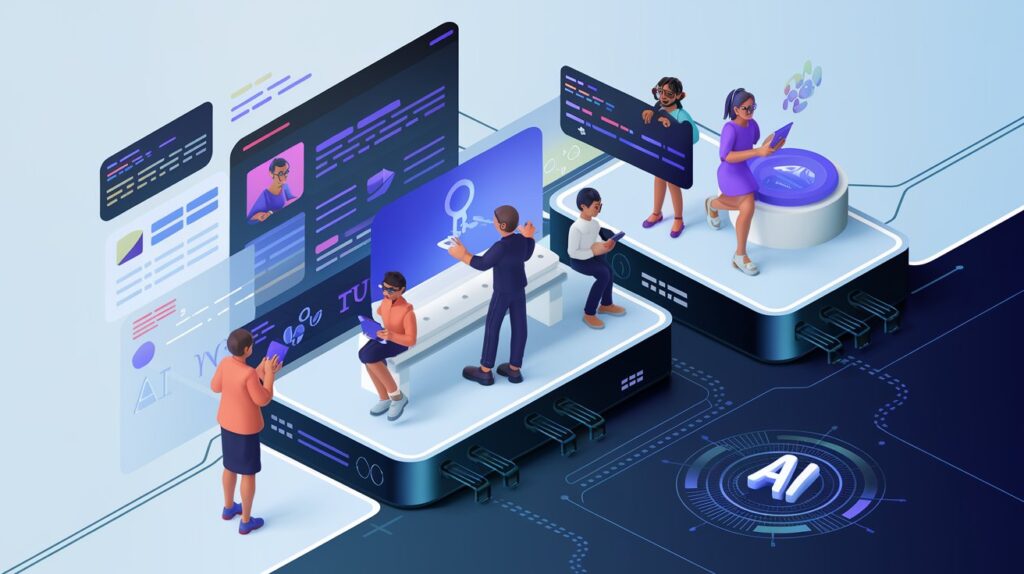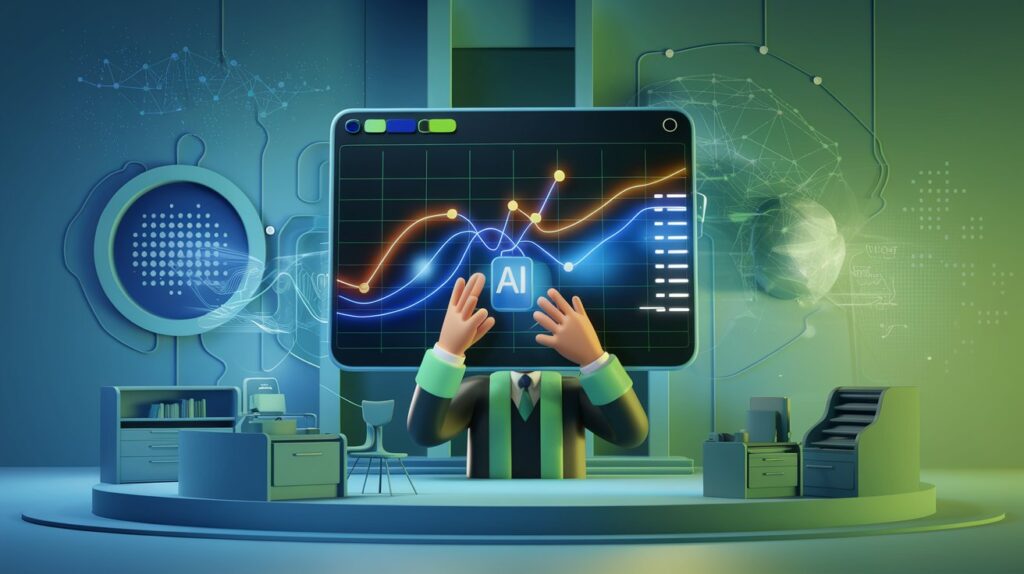Artificial Intelligence (AI) is rapidly transforming our world, but what is the true purpose behind this powerful technology? This guide explores the primary objectives of AI, shedding light on why it exists, what it aims to achieve, and how it impacts our daily lives. By the end of this article, you’ll have a clear understanding of AI’s core goals and how they align with both technological advancements and human needs.
Table of Contents
The Evolution of AI Objectives
AI has come a long way since its inception. Initially, AI’s primary objective was to automate simple tasks and perform repetitive processes more efficiently than humans. Over time, these goals have evolved significantly:
- Early AI: Focused on automating straightforward tasks and calculations.
- Machine Learning Era: Introduced the ability for systems to learn from data and improve over time.
- Advanced AI: Now includes complex goals such as autonomous decision-making and deep learning.
This evolution reflects AI’s growing capacity to handle more sophisticated tasks and address increasingly complex challenges. For a deeper dive into AI’s history, check out this article on the evolution of AI.
Current Primary Objectives of AI

Enhancing Efficiency and Productivity
One of AI’s most significant impacts is its ability to enhance efficiency and productivity. By automating routine tasks, AI helps businesses:
- Increase Accuracy: AI systems reduce human error, leading to more precise outcomes.
- Boost Productivity: Automation allows employees to focus on higher-value tasks, driving overall productivity.
Example: In manufacturing, AI-driven robots can perform repetitive tasks with greater precision and speed, resulting in higher output and lower costs. Learn more about how AI is revolutionizing productivity in manufacturing.
Solving Complex Problems
AI excels in tackling challenges that are beyond human capability:
- Data Analysis: AI can analyze vast datasets quickly, uncovering patterns and insights that would be impossible to detect manually.
- Simulation: AI models can simulate complex phenomena, aiding in scientific research and innovation.
Example: AI algorithms are used in climate modeling to predict weather patterns and assess environmental impacts with high accuracy. For a more detailed explanation, visit this resource on AI in climate science.
Improving Human Life
AI’s contributions extend to enhancing various aspects of human life:
- Healthcare: AI assists in diagnosing diseases, personalizing treatment plans, and managing patient data.
- Education: AI-powered tools offer personalized learning experiences and support educators in assessing student performance.
Example: AI applications like IBM Watson are used in oncology to analyze patient data and recommend treatment options tailored to individual needs. To explore AI’s impact on healthcare further, read this in-depth guide on AI in healthcare.
Achieving Autonomy
AI seeks to create systems that can operate independently:
- Autonomous Vehicles: AI enables self-driving cars to navigate and make decisions without human intervention.
- Decision-Making Systems: AI systems can make decisions based on learned data, such as financial trading algorithms.
Example: Google’s DeepMind has developed AI that can make strategic decisions in complex games, showcasing its potential for autonomous problem-solving. Discover more about AI’s role in autonomous systems.
Ethical Considerations
As AI evolves, ethical considerations become increasingly important:
- Fairness: Ensuring AI systems do not perpetuate biases or discrimination.
- Transparency: Making AI decisions understandable and accountable.
- Accountability: Establishing who is responsible for AI-driven outcomes.
Example: Ethical AI frameworks are being developed to guide the responsible use of AI in sensitive areas like criminal justice and hiring practices. For more information on ethical AI, check out this article on AI ethics.
Research and Insights
AI Objectives in Different Sectors
| Sector | Primary Objective | Impact |
|---|---|---|
| Healthcare | Personalized treatment and diagnostics | Improved patient outcomes and efficient healthcare delivery |
| Finance | Fraud detection and risk management | Enhanced security and better financial decision-making |
| Transportation | Autonomous navigation and traffic management | Increased safety and reduced traffic congestion |
Data Point: According to McKinsey, AI can boost productivity in sectors like manufacturing by up to 30%. Read more about AI’s impact on productivity.
Expert Opinion: “AI’s potential to solve complex problems and enhance productivity is immense, but it must be developed responsibly,” says Dr. Fei-Fei Li, a leading AI researcher. For more detailed insights, see this report on AI’s sectoral impacts.
FAQs
What is the primary goal of AI in healthcare?
AI in healthcare primarily aims to enhance patient outcomes through improved diagnosis accuracy, personalized treatment plans, and efficient management of healthcare data. It leverages machine learning algorithms to analyze medical records, predict patient outcomes, and assist in decision-making processes. For further insights, explore this comprehensive guide on AI in healthcare.
How does AI enhance efficiency in industries?
AI enhances efficiency by automating repetitive tasks, reducing human error, and enabling faster decision-making processes. In industries like manufacturing, AI-driven robots can operate 24/7, leading to increased productivity and lower operational costs. Learn more about AI’s role in industrial efficiency.
Can AI surpass human intelligence, and what would that mean?
While AI can surpass human capabilities in specific tasks, such as data analysis and pattern recognition, the concept of AI achieving general intelligence comparable to humans remains speculative. If AI were to reach or exceed human intelligence, it would raise significant ethical and societal questions, including concerns about control, decision-making, and autonomy. For more on this topic, read this article on AI and human intelligence.
What ethical concerns arise from AI’s objectives?
Key ethical concerns include the potential for AI to perpetuate biases, the lack of transparency in AI decision-making processes, and the challenge of holding AI systems accountable for their actions. Ensuring that AI is developed and used responsibly is crucial to mitigate these risks. Explore ethical considerations in AI here.
How does AI balance autonomy with human oversight?
AI systems are designed to operate autonomously in certain scenarios, such as self-driving cars or financial trading algorithms. However, human oversight remains essential to ensure that these systems make decisions that align with ethical standards and societal norms. Human intervention is particularly important in high-stakes situations where AI’s decisions can have significant consequences. For more on AI autonomy and oversight, visit this resource.
Practical Tips
- Align AI Strategies: When implementing AI, focus on solutions that enhance efficiency while addressing ethical considerations. Read more in this strategy guide for AI implementation.
- Stay Informed: Keep up with advancements and ethical guidelines to ensure responsible AI use. Visit this resource for more tips.
Tool Recommendations
- TensorFlow: A powerful open-source platform for machine learning, ideal for developing and deploying AI models. Learn more about TensorFlow.
- IBM Watson: Offers advanced data analysis and AI-driven insights for various industries. Discover IBM Watson.
These tools are designed to help achieve AI’s primary objectives, from improving productivity to solving complex problems.
Value-Added Content
Downloadable Checklist: Evaluate AI tools based on alignment with primary objectives. Download Here.
Conclusion

AI’s primary objectives are rooted in enhancing efficiency, solving complex problems, improving human life, and achieving autonomy, all while navigating ethical considerations. As AI continues to evolve, understanding its core objectives will be crucial for harnessing its potential responsibly. Explore how AI can be integrated into your projects or business strategies, and stay informed about the ethical implications of this powerful technology.



Pingback: Transform Good Content into Great Content with Effective Paraphrasing -
Pingback: Top 10 Best AI Image Recognition Tools in 2024 -
Pingback: Can Generative AI Solve Computer Science? -
Pingback: Pre-Trained Multi-Task Generative AI Models: Unlocking the Future of AI -